Six years ago we visited the western part of Sinjajevina plateau for the first time; we had been invited by friends who were building a weekend house in Krnja Jela, at the edge of the mountain plateau, and we were absolutely flabbergasted by the wild scenery in this part of Montenegro.
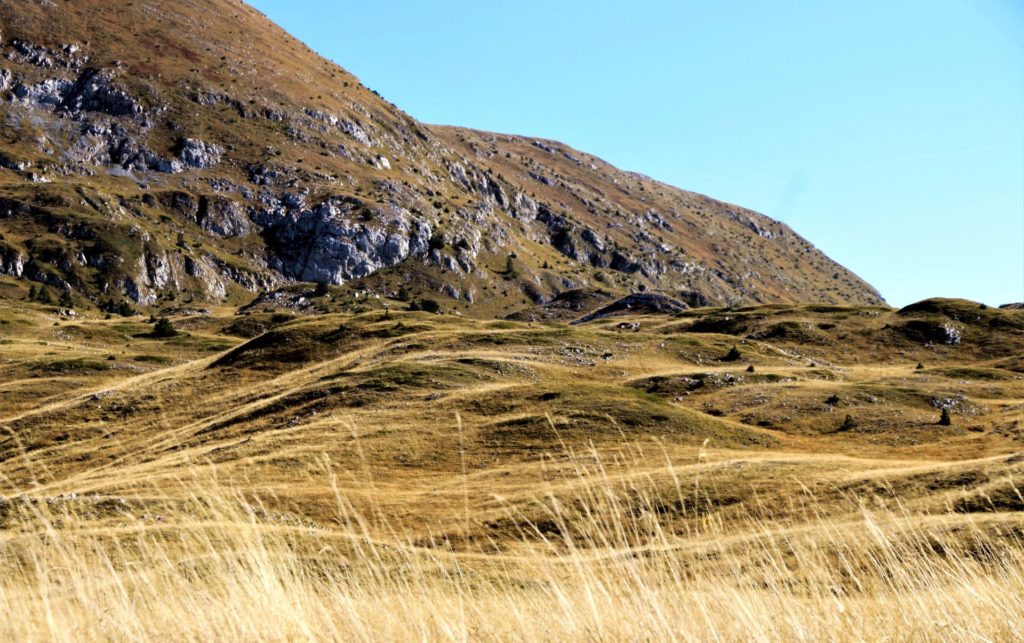 But already then it was quite clear to us: the only way to discover Sinjajevina (or Sinjavina as the locals call it) would be an off-road tour, as there are hardly any asphalt roads running over the plateau. And as we don’t have a 4×4, we had to wait quite a while before we could revisit Sinjajevina.
But already then it was quite clear to us: the only way to discover Sinjajevina (or Sinjavina as the locals call it) would be an off-road tour, as there are hardly any asphalt roads running over the plateau. And as we don’t have a 4×4, we had to wait quite a while before we could revisit Sinjajevina.
Finally, in September, we made the long-expected jeep safari along the eastern side of Sinjajevina – from Kolašin through Lipovo to the Ružica church. And believe me – I hopelessly fell in love with this rough and barren landscape. I have travelled a lot, but I have never seen such an impressive scenery with vast karst fields, rolling pastures, rough mountain peaks and picturesque ‘katuns’.
Last weekend we turned back to Krnja Jela. We followed the road from Mioska to Šavnik and turned right at the signpost ‘CRKVA’, driving uphill along a narrow road through dense beech forests.
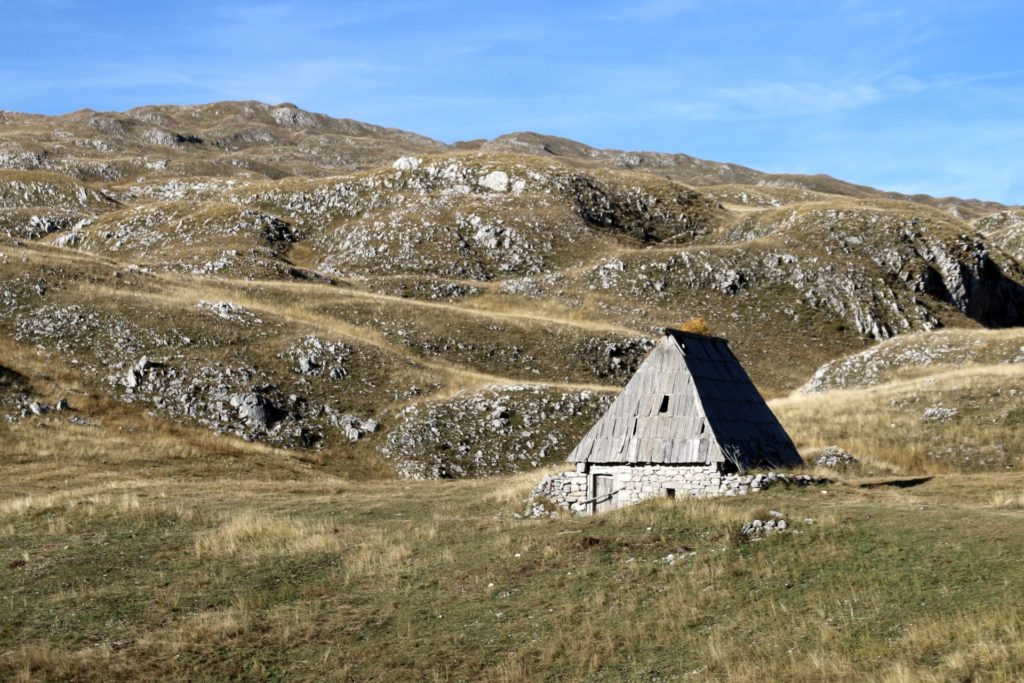 Our friends welcomed us in the old Montenegrin way: with lots of food and a warm heart. They even took us for a ride with their all-terrain vehicle to Jablanov Vrh (2203m), one of the highest peaks of the plateau, telling us many interesting stories about the families and tribes that have been using these pastures for centuries and centuries.
Our friends welcomed us in the old Montenegrin way: with lots of food and a warm heart. They even took us for a ride with their all-terrain vehicle to Jablanov Vrh (2203m), one of the highest peaks of the plateau, telling us many interesting stories about the families and tribes that have been using these pastures for centuries and centuries.
Nowadays, only a few families stay in the village during the winter, as the area is not accessible due to the thick snow cover. No wonder, Krnja Jela is situated at an altitude of 1600 m above sea level.
However, tourists have already discovered this region during the summer, and you can meet many hikers, mountain bikers and other nature lovers on the plateau in the period from June to September.
Why is this village named Krnja Jela (in translation: ‘broken fir tree’)? A long time ago there was a lonely and tall fir tree standing here on the barren karst field. Snow, rain and wind could not destroy it, but once there was a heavy thunderstorm… the tree was hit by a lightning strike and a big part of it broke off. After that, the whole area around the wounded tree was called Krnja Jela.
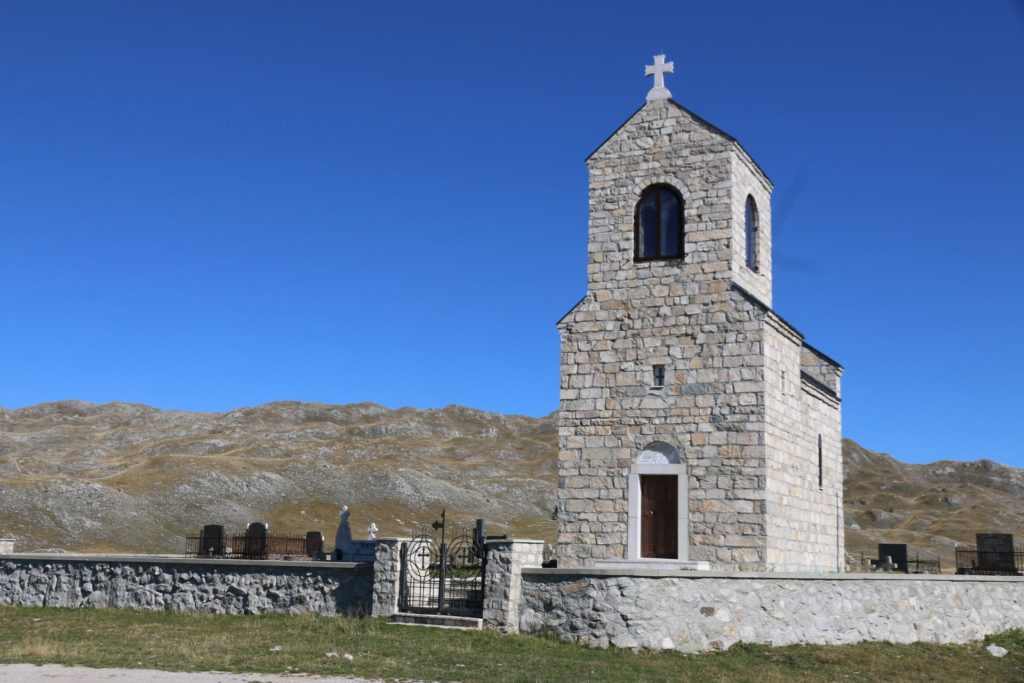 It was a bright and sunny day, perfect for a jeep safari. The grass was yellow and dry, and the cattle had already been transported to the lower areas. Numerous molehills could be seen all over the pastures. We heard that moles digging causes considerable damage to the land and it seems to be quite a problem for the villagers to get rid of these animals.
It was a bright and sunny day, perfect for a jeep safari. The grass was yellow and dry, and the cattle had already been transported to the lower areas. Numerous molehills could be seen all over the pastures. We heard that moles digging causes considerable damage to the land and it seems to be quite a problem for the villagers to get rid of these animals.
Our first stop was at the village church, a lonely stone building with a graveyard, in the middle of vast pastures. The church, made of stones found on the surrounding fields, is dedicated to St. Archdeacon Stefan. From here, we could already see the typical silhouette of Jablanov Vrh, situated in the central part of the plateau.
We followed the trail through the pastures, passing a few lonely huts. And again, barren fields. No wonder that Sinjajevina is sometimes called ‘Montenegrin Tibet’.
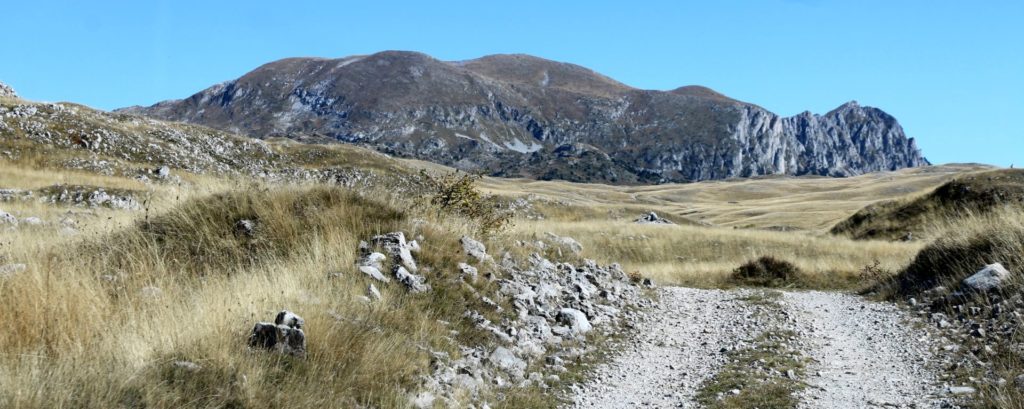 By the way, it is supposed that several rivers ran over the plateau in ancient times; fluvial erosion left its traces and these fossile river valleys now form such a strange landscape.
By the way, it is supposed that several rivers ran over the plateau in ancient times; fluvial erosion left its traces and these fossile river valleys now form such a strange landscape.
At once, we saw a picturesque settlement along the road: it was a recently opened ethno-village named ‘Crvena Greda’. Signposts showed different hiking destinations in the surroundings. The ethno-village was already closed, but it looked very attractive with its wooden huts and traditional items. This is the right way to promote tourism on Sinjajevina, a very good example indeed!
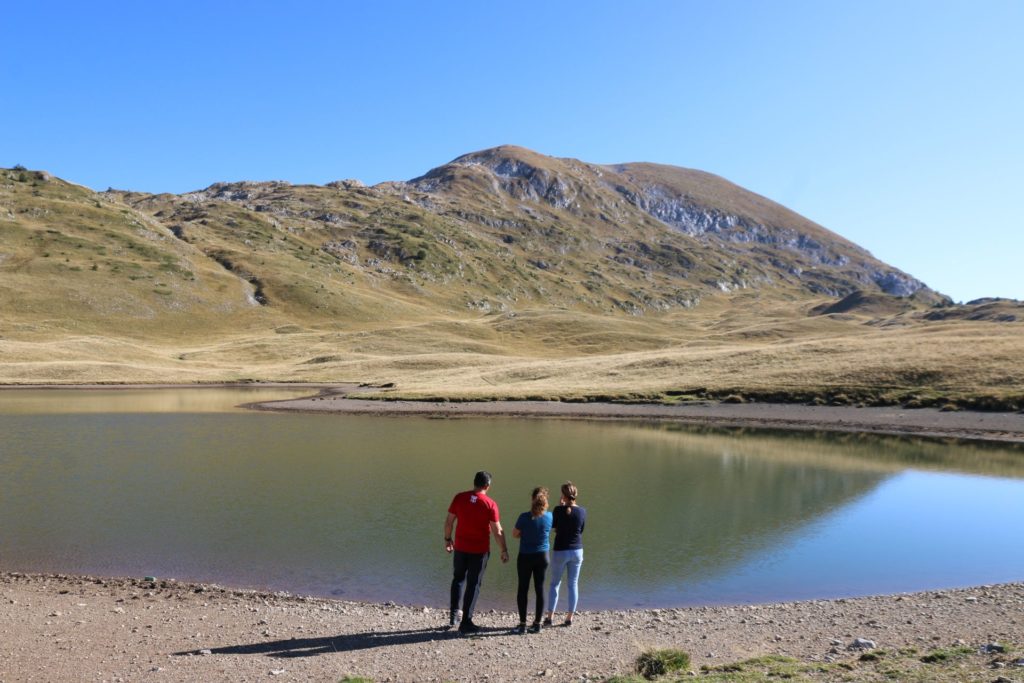 Jablanov Vrh got closer, the road even worse, at some places it was no more than a cattle track. We left the – now almost abandoned – katun of Ječmen Do on our right side and continued to the Lake. Locals just call it ‘Jezero’ (‘Lake’), but its real name is Savino Jezero.
Jablanov Vrh got closer, the road even worse, at some places it was no more than a cattle track. We left the – now almost abandoned – katun of Ječmen Do on our right side and continued to the Lake. Locals just call it ‘Jezero’ (‘Lake’), but its real name is Savino Jezero.
Who would expect such a picturesque lake here, in the middle of the plateau? And how was it created?
According to legend, once there was a spring here, created by St. Sava when he made the sign of a cross with his staff while passing through this area. Later on, the local shepherds built a dam around this spring, and thus created a storage lake that still serves as a drinking place for their cattle.
Several hiking trails run from here to Jablanov Vrh – unfortunately, we did not have the opportunity to climb it, but the view from the top must be amazing.
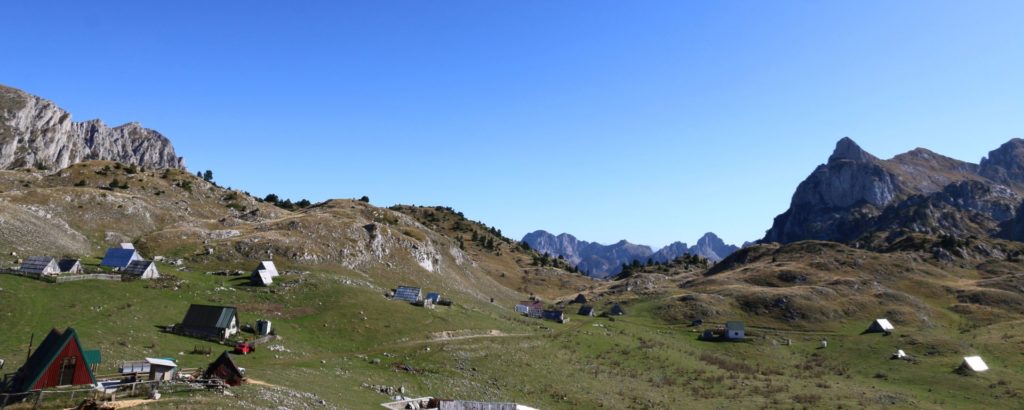 The sun was going down, the shades got longer and longer, while the rolling fields were playing between sun and shade. Autumn leaves – yellow and red – shone brightly. Indian summer on Sinjajevina showed its wonderful colors…
The sun was going down, the shades got longer and longer, while the rolling fields were playing between sun and shade. Autumn leaves – yellow and red – shone brightly. Indian summer on Sinjajevina showed its wonderful colors…
There are some other parts of Sinjajevina that I would like to visit: Zabojsko Jezero and several katuns in the northern part of the plateau. Unfortunately, summer is almost over and I will have to wait until next year. But I’ll be back!
For more information about Sinjajevina, see:
Exploring Sinjajevina: a wonderful day in Krnja Jela
An off-road tour to the amazing world of Sinjajevina
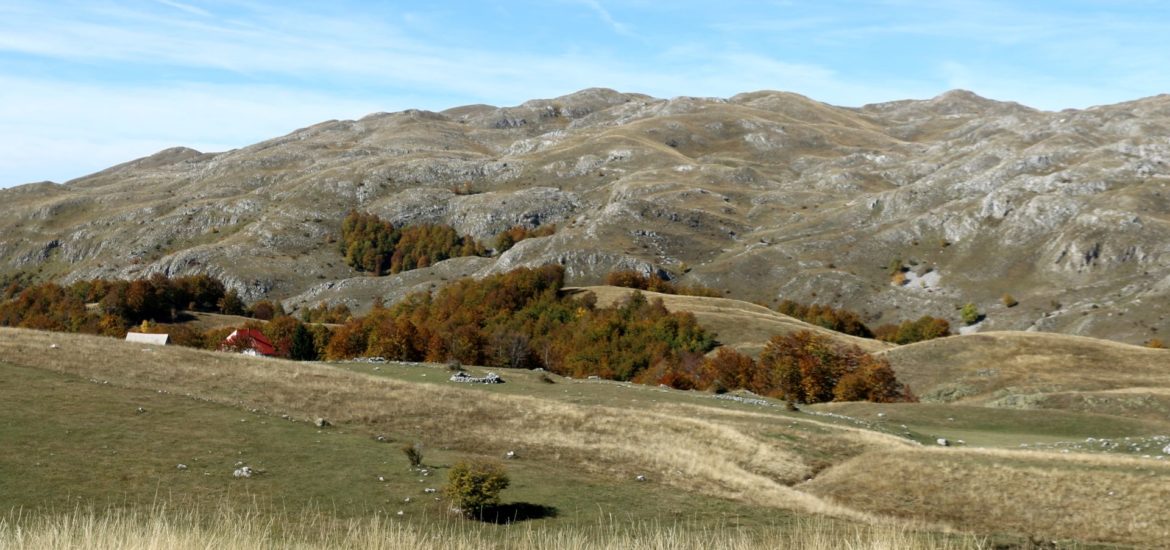
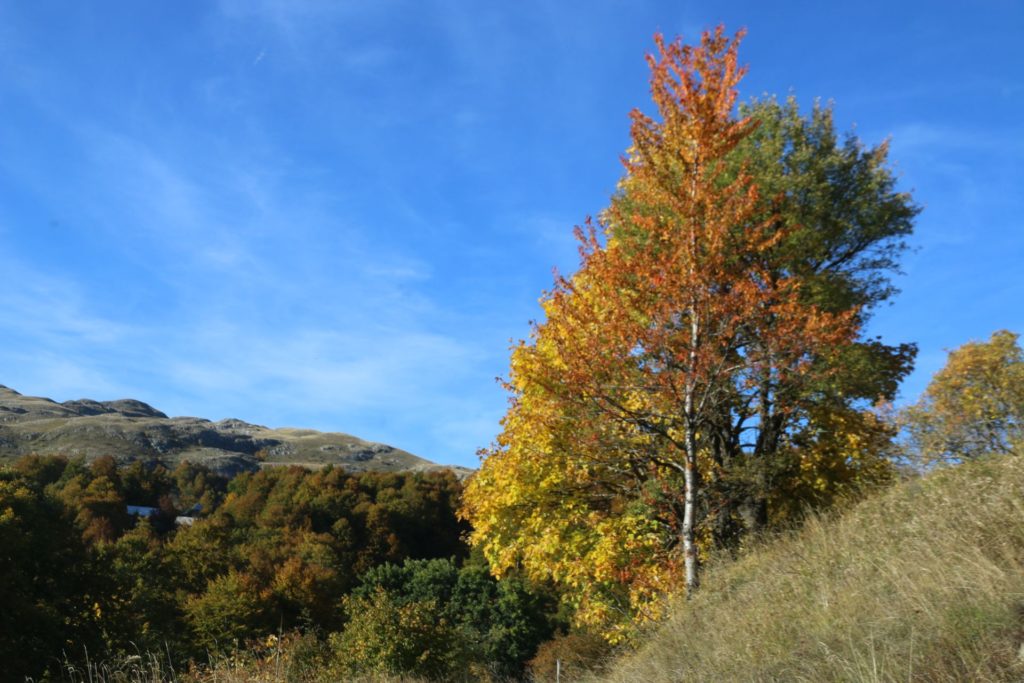
Hallo Marianne,
Ik ben een paar jaar geleden met mijn dochter voor een week naar Montenegro geweest. Een prachtige vakantie en we hebben toen veel van informatie gebruikt. En elke keer als ik nu weer een bericht krijg lees ik met veel plezier en belangstelling je verhaal en kijk mee op Google Earth waar je bent geweest.
Ik mag nog een paar jaar werken en als ik dan meer tijd over heb dan zal ik zeker nog weer een keer Montenegro bezoeken.
Ik hoop dat ik nog veel van je verhalen mag lezen.
Groet. Ton Dekker uit Heerhugowaard.
Hartelijk dank, Ton! Als je weer naar Montenegro komt, meld je dan even. Ik zal je graag op weg helpen! Groetjes van Marianne